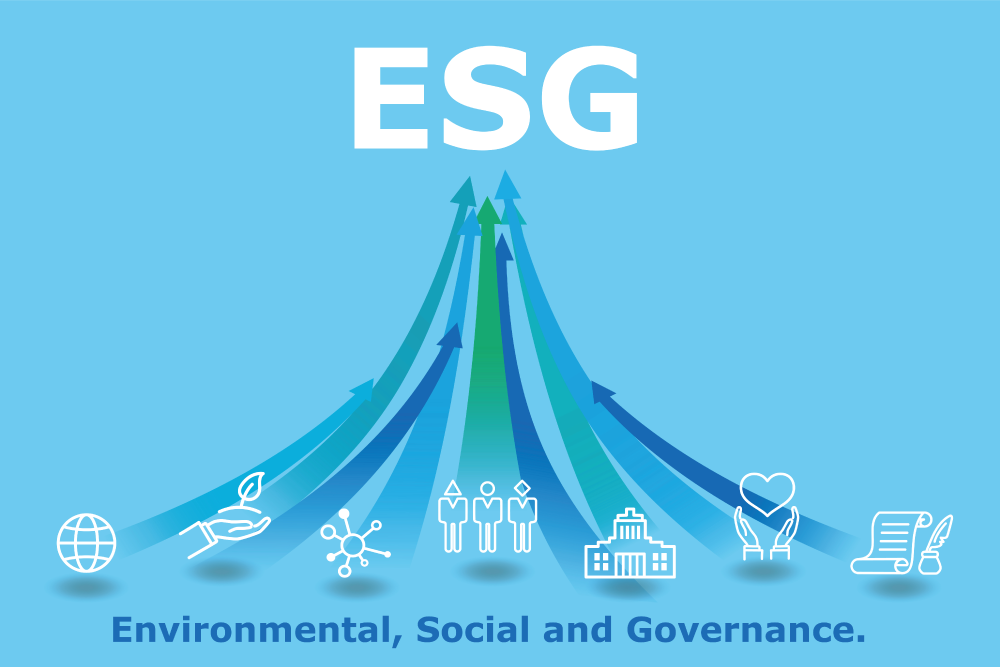The message from stakeholders is growing louder with each passing year. People expect and demand that the companies they work for, buy from, invest in and engage with focus on their impact and work to make the world a better place. More and more individuals aren’t just measuring an organization’s success in terms of products, investment returns, or compensation. They’re becoming more interested in how organizations are moving the needle on environmental, social, and governance (ESG) issues.
This focus is not new, but historically social and environmental impact demands originated in small, niche stakeholder groups. This has changed significantly in recent years. The number of stakeholders (e.g., employees, customers, partners, communities) demanding impact has increased, along with expectations around the types of social and environmental initiatives and what’s expected of companies in terms of initiatives, investment and impact. Today, 84% of global consumers consider sustainability important when choosing a brand. Further, 69% of workers are more likely to work for an organization that they consider environmentally sustainable, and half of consumers would accept a lower salary to work for these types of organizations.[1]
For society and our world, an increased focus on addressing the challenges we face is a positive development. For companies, bruised and strained from the past couple of years addressing issues laid bare by the pandemic, racial injustice and environmental turmoil, little time and effort have been available to effectively and efficiently engage with stakeholders, clearly articulate their impact objectives and execute coordinated efforts to realize these objectives.
As a result, while companies are dedicating significant time, effort and financial resources to ESG demands and priorities that have arisen, these efforts have been largely reactive, rather than proactive, targeted and strategic. Companies have been shooting many arrows in many directions without first defining a coordinated set of social and environmental impact objectives. Without this clearly articulated set of impact areas and objectives, or a robust mechanism for stakeholders to engage and discuss topics that present themselves, companies often struggle to keep up with ESG demands. Without the ability to set their own priorities, timelines and benchmarks, companies find themselves beholden to all stakeholders for all ESG issues, no matter how unrealistic or tangential to the organization’s core mission.
Defining the ESG Expectation Gap
This “expectation gap” between what stakeholders desire for a company’s social and environmental impact and what the company is able to define, communicate and benchmark creates the potential for considerable stakeholder dissatisfaction and activism that could drive employee turnover, legal issues, lost customers and negative press.
This challenge is especially considerable for small- to mid-size organizations that do not currently have dedicated resources focused on closing the impact expectation gap and proactively addressing the organizational and reputational risks it creates. Fortunately, there are proven steps leaders can take to address the expectation gap and create a competitive advantage in the ESG space.
4 Steps to Realizing a More Strategic ESG Program
As organizations look to reclaim their impact efforts and develop long-term strategic initiatives, here are four key steps to take along that journey.
1. Take Stock of Current and Proposed Efforts – One of the challenges of having impact defined by external forces is that organizations may not even be getting credit for the initiatives they are undertaking. The first step for board and executive leaders is to collect and assess efforts, objectives, understanding, capacity, and resources currently allocated towards social and environmental impact in the organization. This effort will provide an important view of impact in the organization in order to inform planning and discussions for the desired future state. Additionally, by launching this initiative, engaging with stakeholders, and signaling the company’s desire to better define the desired impact objectives and structure to achieve these objectives, the organization is already starting on a path to closing the stakeholder expectation gap.
2. Establish Goals and Priorities Building on these findings and recommendations, organizations are well-positioned to engage with stakeholders further to define the desired impact objectives as well as align and coordinate implementation efforts to realize these objectives. They can determine where their efforts will be focused and what success will look like – both internally and externally.
3. Formalize Efforts -- As external and internal focus on impact have grown, more and more organizations have taken to devoting dedicated resources and leadership to ESG efforts, even going so far as to create an Office of Impact or other ESG divisions and incorporating its leadership into the C-suite with positions like Chief Impact Officer or Chief Sustainability Officer. Regardless of company size or industry, this step helps maintain dedicated resources and demonstrate a sustained ESG focus for stakeholders.
4. Demonstrate Progress -- In almost all cases, stakeholders understand that it takes time to create social and environmental change. They know that the size and scope of the issues are considerable, and they won’t be solved by one organization overnight. However, those same stakeholders do expect clarity regarding the impact objectives of an organization, inclusion and visibility into helping to achieve the objectives, and confidence that the organization has the focus and abilities to work to achieve the objectives. Success for organization leaders is not achieving the impact objectives today or even this year – success is creating a clearly articulated destination and demonstrating progress on the path to getting there.
Joshua Burgher is a Principal at PKF O’Connor Davies and helps lead the firm’s management advisory services focused on Environmental, Social, and Governance initiatives, including its attest services and Quickscan Assessment, which evaluates the current state of an organization’s social and environmental impacts and serves as a starting point for further collaboration with the Firm in the development and implementation of impact programs.
[1] Source: https://www.ibm.com/downloads/cas/WLJ7LVP4






